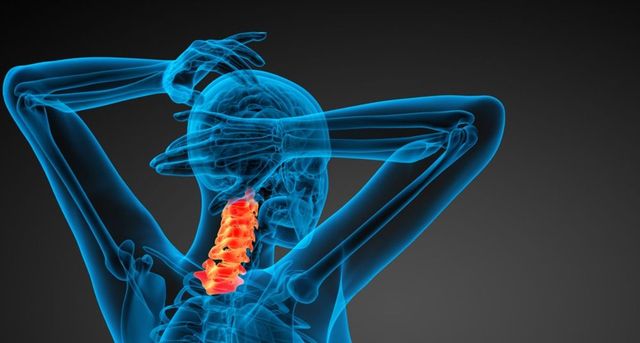All Concerning Spinal Decompression: Reliable Solutions for Spinal Health and Wellness
Spinal decompression treatment has actually become a sensible option for those seeking alleviation from different spinal concerns. This non-invasive treatment targets the source of pain, such as herniated discs and persistent pain in the back. Understanding its applications and concepts can shed light on how it promotes overall spinal health and wellness. What are the details advantages and strategies involved in spinal decompression? Checking out these questions may expose beneficial insights for individuals considering this approach.
Comprehending Spinal Decompression Treatment
Exactly what is spinal decompression therapy, and how does it function? Spinal decompression therapy is a non-invasive therapy targeted at soothing stress on the spine's discs and nerves. It uses specialized devices to delicately stretch the spine, producing unfavorable pressure within the discs. This negative stress helps with the repositioning of herniated or protruding discs and motivates the influx of vital nutrients and fluids into the impacted areas.
Patients commonly lie on a mechanized table that sustains the spine while enabling controlled traction. The therapy can target different spinal conditions, consisting of chronic back discomfort, sciatic nerve pain, and disc degeneration. Procedure are typically pain-free and can last from 30 to 45 minutes. While lots of individuals experience instant alleviation, a collection of sessions might be suggested for ideal outcomes. On the whole, spinal decompression treatment stands for an alternative method to spinal wellness, intending to recover function and promote overall wellness.
The Science Behind Spinal Decompression
Spinal decompression therapy is grounded in principles of biomechanics and physiological action to stress adjustments within the spinal column. This non-invasive treatment intends to ease spinal disc pressure, which can add to discomfort and discomfort. By utilizing grip methods, spinal decompression develops an unfavorable pressure setting within the intervertebral discs. This adverse stress helps with the repositioning of herniated or protruding discs and advertises the influx of necessary nutrients and fluids, helping in the recovery process.
Research study shows that spinal decompression can bring about a rise in disc height, which might alleviate nerve origin compression. Chiropractor. The treatment also intends to boost spinal alignment, possibly enhancing total biomechanical function. Comprehending these scientific concepts assists experts apply spinal decompression efficiently, guaranteeing that people get targeted care tailored to their certain spinal conditions. In general, the scientific research behind spinal decompression underscores its significance in the field of spinal health
Benefits of Spinal Decompression
While numerous individuals seek alleviation from persistent back pain, the advantages of spinal decompression prolong past mere discomfort administration. This therapeutic technique aids in improving spinal wellness by promoting appropriate placement and reducing stress on intervertebral discs. Boosted circulation is an additional significant advantage, as spinal decompression promotes far better blood flow to the spine, nourishing surrounding tissues and accelerating recovery procedures.
Furthermore, spinal decompression can lead to raised flexibility and boosted series of movement, making it possible for individuals to take part in everyday tasks with better ease. Many individuals report improved general health and a decrease in stress and anxiety levels, as minimizing pain in the back can greatly improve high quality of life.
In addition, spinal decompression might act as a safety net, assisting to avert future spinal concerns by keeping perfect spinal function. On the whole, the multifaceted benefits of spinal decompression highlight its value in advertising lasting spinal health and health.
Sorts Of Spinal Decompression Techniques
Different techniques exist for spinal decompression, each developed to alleviate stress on the spine and boost total wellness. One typical technique is mechanical spinal decompression, which uses a traction table to delicately stretch the spine, creating negative pressure in the discs. An additional approach is hand-operated spinal decompression, executed by a chiropractic physician, that uses regulated force to alleviate and straighten the spine stress.
Furthermore, there are non-invasive treatments such as inversion therapy, where people hang upside down to promote spinal prolongation. In addition, exercises that concentrate on strengthening core muscles can add to spinal support and decompression.
Some specialists utilize advanced techniques like spinal decompression tools, which are crafted to provide targeted relief. Each technique aims to boost spinal alignment, decrease discomfort, and boost movement, accommodating the one-of-a-kind demands of individuals looking for alleviation from spinal discomfort.
What to Anticipate During a Spinal Decompression Session
During a spinal decompression session, clients can expect a series of preparation actions made to ensure their comfort and security. The session itself generally entails a mix of healing strategies targeted at relieving pressure on the spine. Understanding these elements can aid people feel extra comfortable before and during the treatment.
Therapy Prep Work Steps
As people plan for a spinal decompression session, they can expect a meticulously organized process developed to ensure their convenience and safety and security. Initially, specialists will carry out a detailed analysis, evaluating case history and present symptoms to tailor the therapy. Patients might be advised to use comfortable garments and eliminate any precious jewelry that could interfere with the procedure. It's likewise usual for clinicians to discuss the technology and techniques made use of in spinal decompression, ensuring people comprehend the procedure and its benefits. Additionally, clients might be advised to moisten effectively prior to the session. This preparation aims to create a positive environment for spinal health and wellness, permitting patients to feel protected and informed about their therapy trip.
Session Experience Introduction
A spinal decompression session generally unfolds in a calm and controlled environment, where patients are located pleasantly on a specialized table developed for the procedure. The specialist begins by describing the procedure, ensuring the patient recognizes each step. When cleared up, mild grip is applied to the spine, producing room in between the vertebrae to relieve stress on the nerves and discs. People may feel a light stretching feeling, but discomfort must be marginal. Sessions usually last regarding 30 to 45 mins, during which the expert keeps an eye on the person's reaction. Afterward, individuals might obtain suggestions for follow-up care or exercises to boost results. Generally, the experience intends to advertise leisure and healing, fostering a sense of health.
That Can Take Advantage Of Spinal Decompression?
Who stands to acquire the most from spinal decompression treatment? Individuals experiencing chronic back discomfort, herniated discs, or degenerative disc condition are primary candidates for this therapy. Those experiencing sciatic nerve pain or pins and needles in the limbs might also benefit greatly, as spinal decompression can assist alleviate stress on the spinal nerves. In addition, athletes recouping from injuries or people with postural issues typically locate relief via this treatment.
People looking for a non-invasive option to surgery for their spinal health and wellness problems may consider spinal decompression as a viable choice. It is crucial for potential prospects to speak with health care professionals to determine the appropriateness of this therapy for their particular problems. Generally, spinal decompression therapy can offer substantial advantages for a varied series of people, enhancing their general top quality of life and promoting far better spinal health.
Tips for Keeping Spinal Health After Treatment
After undertaking spinal decompression therapy, keeping spinal wellness is important for long-lasting health. Applying routine exercise routines, bearing in mind posture, and establishing an ergonomic office can greatly add to a healthier spine. These methods not just support recuperation but likewise help avoid future issues.

Regular Exercise Regimens
Preserving spinal wellness following treatment is essential for lasting recuperation and total health. Routine exercise regimens play a crucial function Top Chiropractor in this procedure. Engaging in low-impact tasks such as swimming, walking, and biking can assist strengthen the muscles supporting the spine, improve versatility, and improve general mobility. Incorporating core-strengthening exercises is specifically valuable, as they offer security and support to the spine. Additionally, gentle stretching routines can relieve tension and promote leisure in the back muscles. It is essential to get in touch with a health care professional prior to beginning any type of brand-new exercise regimen to guarantee it straightens with private recuperation objectives. Consistency in these tasks fosters a proactive method to spinal health and wellness, aiding in the avoidance of future problems.
Posture Recognition Strategies
A strong awareness of posture can considerably impact spinal wellness throughout the healing process. People must knowingly preserve an upright position, ensuring that the head is straightened with the spine and shoulders are relaxed. On a regular basis signing in with one's pose throughout the day can aid strengthen great practices. When resting, making use of an encouraging chair that advertises lumbar support is important. Furthermore, standing for long term durations calls for weight distribution between both feet and engaging the core muscles. Exercising gentle stretches and mobility exercises can also improve understanding of posture. Mindfulness methods, such as deep breathing, can assist in acknowledging tension and promoting relaxation in the back. Carrying out these strategies promotes a proactive technique to spinal health and wellness post-treatment.
Ergonomic Work Area Arrangement
While an ergonomic workspace may feel like a luxury, it is critical for those recuperating from spinal concerns. A well-structured atmosphere can significantly aid in maintaining spinal health. Trick components consist of a chair with lumbar assistance, which urges proper stance, and a workdesk height that enables elbow joints to rest at a 90-degree angle. Additionally, computer system screens should go to eye degree to decrease neck stress. Routine breaks to extend and stand are crucial, as long term sitting can aggravate discomfort. Foot rests can likewise enhance circulation and decrease stress on the reduced back. By prioritizing these ergonomic principles, individuals can produce an encouraging office that promotes recovery and advertises long-lasting spinal health, ultimately enhancing overall productivity and convenience.
Regularly Asked Questions
For How Long Does Spinal Decompression Treatment Generally Require To Program Results?
Spinal decompression treatment commonly takes a number of weeks to show recognizable results. A lot of people experience improvement within 4 to 6 weeks, relying on private conditions and adherence to the suggested therapy plan described by healthcare professionals.
Exist Any Kind Of Negative Effects Connected With Spinal Decompression Therapy?
Spinal decompression treatment might create moderate side impacts, such as momentary discomfort, muscle mass convulsions, or pain after treatment. These signs are typically short-lived and deal with promptly, enabling individuals to proceed their therapy properly.
Can Spinal Decompression Treatment Be Done in your home?


Is Spinal Decompression Safe for Expectant Women?
Spinal decompression is usually taken into consideration risky for expecting females as a result of possible risks. It is important for pregnant moms to get in touch with health care professionals before going through any spinal treatments to guarantee the safety of both mommy and infant.
Exactly how Often Should I Undergo Spinal Decompression Treatment for Ideal Results?
Typically, people ought to undergo spinal decompression therapy 2 to 3 times a week for finest outcomes. Nevertheless, the regularity may differ based on individual problems and must be identified by a healthcare expert.
Spinal decompression therapy is based in principles of biomechanics and physiological feedback to pressure modifications within the spinal column. Recognizing these clinical concepts aids specialists use spinal decompression properly, ensuring that people get targeted care tailored to their particular spinal problems. Spinal decompression may serve as a preventative procedure, helping to prevent future spinal problems by maintaining excellent spinal function. Individuals looking for a non-invasive choice to surgery for their spinal health problems might take into consideration spinal decompression as a sensible choice. After going through spinal decompression therapy, keeping spinal health and wellness is crucial for long-lasting health.